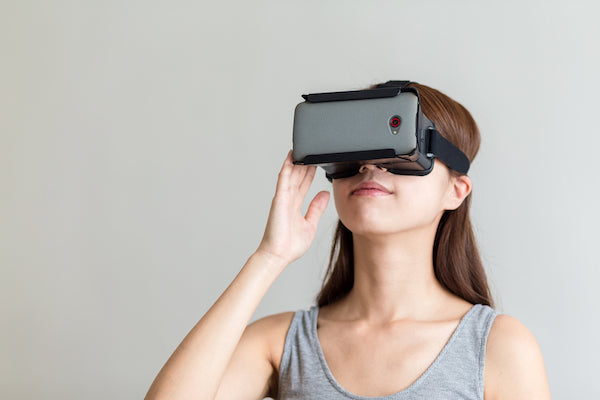Nearly 20 years ago the computers and learning programs were hitting the market for children. I was a member of the Academy of Pediatrics Early Childcare Committee and helped in supporting the use of computers in daycare. However, it was not long before I saw some major issues that included the computer becoming a babysitter or means of discipline within daycare. It was also, and still, a struggle for those without money to attain computers for their children; making a socioeconomic rift in those that learn computer skills.
The AAP has long supported time limitations and worked to limit killing games from children and adolescents, sighting changes and negative type behavior as a result of playing these fast games. In 1990’s Congress held hearings on this. I remember the game Doom, which even had a secret key that the kids would press when the parent walked in that went from screaming and blood shooting out from an arm, to just showing a kill.
Now the games are everywhere, and millions of downloads, played by nearly every high school and college male, and many females. Minecraft, Grand Theft Auto, and World of Warcraft are million dollar sellers. Individuals play against themselves, against friends, and against those on the world wide web. These games are getting faster, the graphics look life-like, and the multi-sensory action during a given 3 second spurt is truly amazing.
Learning and memory games have touted the ability to improve memory. This has not happened, and even franchises that tout this improvement have never been able to sustain the effect or have medical university support. Unfortunately, even Luminosity was hit with a lawsuit making this claim. This is not to say that learning programs are not beneficial, but here we are discussing the response to fast action “kill 'em” games! Can we benefit from playing them after all? Brain science is fascinating as we are beginning to understand more deeply how the dorsolateral prefrontal cortex helps with sustained attention, the parietal cortex allows us to change focus on the fly and return, the cingulate gyrus monitors our behavior, and the amygdala houses our emotional self.
ADHD and Video Games
The ADHD individual is tremendous at video games, and I ask everyone of my over 5,000 patients if they play video games. They all report they are good at it, and over 80% males/40% females report playing on a regular basis. To me, they do not have ADHD (Attention Deficit Hyperactivity Disorder). To me, they have BINB brains (Be Interesting, Not Boring!). ADHD is “Attention Described Differently” and these individuals are masters at being able to play the fast action games, deal with 4 things happening on the screen, can block out information not important to the game, adapt on the fly, learn from their mistakes, and advance to higher levels of play.
Plasticity is the ability of the brain to adapt and grow. We see it in sports as one trains and gets better, we see it in the training of complicated jobs, and we see it in those suffering brain injury or post brain tumor surgery. We also see it in the young brain, and the adolescent brain, as they learn video games; improving their own speed and success as they go. My 5 year old grandson plays the same car video game with ease that I had trouble doing when it first came out 30 years ago! As I watch, I am amazed at his eye contact, his focus, his hand movements, and his skill. All this is going into the brain of a 5 year old and helping shape his world and improve his abilities.
The same of the ADHD person, who is impulsive and distracted, yet can focus on these games. Why? BINB!! The game is fast, requires one to get better at attention and adaptation, it is OK to lose, you win in steps, given rewards, can pause the game on your terms (except when mother yelling it is time for school!), things happen on a time scale (immediate kill the enemy, minutes to win the mission, and maybe hours or days to complete the game). Reminds me of my business ventures! But all of it is rewarding, and the reward center of the prefrontal cortex lights up with each success.
Studies at the department of brain and cognitive sciences at the University of Rochester and University of Wisconsin-Madison have shown that the tailored, really fast action games actually increase one’s ability to adapt quickly, multi-track, and sustain attention.
However, these games have not proven to improve ADHD and one’s attention to a boring teacher or lecture! Just the opposite in my review of my thousands of patients. It makes slowing down harder, making homework harder, making listening to a conversation from a parent difficult at best! School is NON-Action, and needs to speed up if it wants to stay in a pace with today’s 5 year old, who will probably be playing Call of Duty by age 10!
The video games are just that, video. Not sure when the world will realize that is how we learn, that is how the FastBraiin individual learns, and that reading or listening to boring stuff for an hour is not going to make it.
Yes, video games can be very helpful, and I am excited about the future when I look at Magic Leap and Mixed Reality (MR) ...
[embed]https://www.youtube.com/watch?v=BLkFWq_ipCc[/embed]
The possibilities would be endless in how we engage the brain and keep ADHD kid focused and learning.
However, there is a very big difference between skill acquisition or acquiring knowledge, and training working memory. Deshaun Watson, quarterback at Clemson, used virtual reality to help ready him for the field. Pilots train in simulations. Video games can be incredible at helping us learn skills. (If only English and mathematics had engaging video games to help us!) Video games to this point, however, have not been proven effective to increase our working memory. The studies have actually shown that when individuals level up in memory or learning games, they are learning "the game" not learning how to learn or actually increasing their memory potential. When the individual is moved to another environment, the effect of having increased memory goes away. It was an illusion and rather built off the fact that the brain figured out how to beat that particular game.
A few tips for utilizing video games to help ADHD individuals in learning
- We need to take what is good from video games and incorporate that into our learning environment. We have two drums that beat all day at FastBraiin with this: Speed and Repetition. That's what video games do well, which keeps us engaged, and keeps us learning. So for homework, for reading, always remember, speed and repetition. Read the book quickly, then read it again, and again. Study for your exam, and then study that material in quick bursts for the next four nights.
- Transitioning from video games to studying is like jumping off the treadmill at a high speed, and all of a sudden the ground below you is moving and you lose your balance. The ADHD brain needs time to slow down and enter into a different mindset that is appropriate and effective for studying. We suggest taking a minimum break of 3-40 min. between video games and studying.
- On the weekdays, limit your gaming, or your child's gaming to 30 min. a day. On the weekends we suggest no more than 4 hours a day.




